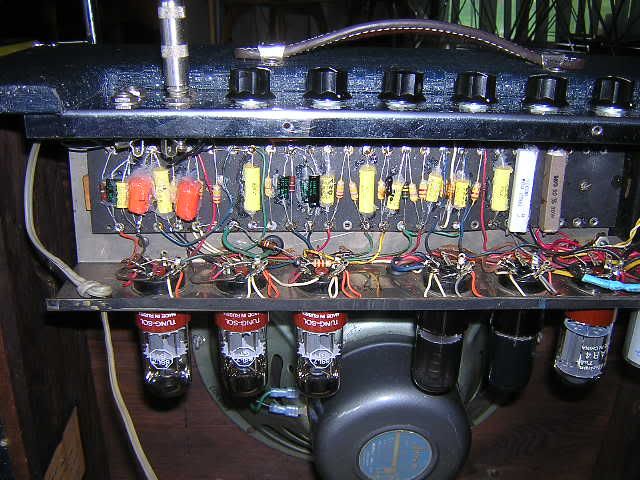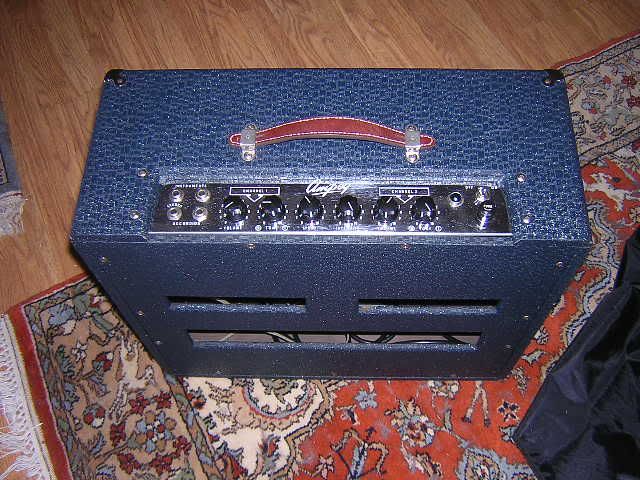I am working on a 1959 Ampeg M12 w/ 12AX7's and 6V6GT's and after replacing the cap can and some wonky resistors it sounds quite amazing, very Deluxe-like but when I switch on the tremolo it works but sounds awful, distorted with a weird scratchy artifact like the ticking of an optoisolator but, of course, there isn't one.
I replaced all the resistors and caps that are in the tremolo circuit on the schematic, re-heated the solder joints, cleaned the pots thoroughly, remove the old footswitch [but not the wire itself] but no change at all.
There are no voltages on the schematic so I am not sure what to look for in terms of voltages.
I have successfully repaired many Fender amps but this is my first Ampeg and would appreciate any help or advice.
I replaced all the resistors and caps that are in the tremolo circuit on the schematic, re-heated the solder joints, cleaned the pots thoroughly, remove the old footswitch [but not the wire itself] but no change at all.
There are no voltages on the schematic so I am not sure what to look for in terms of voltages.
I have successfully repaired many Fender amps but this is my first Ampeg and would appreciate any help or advice.



Comment